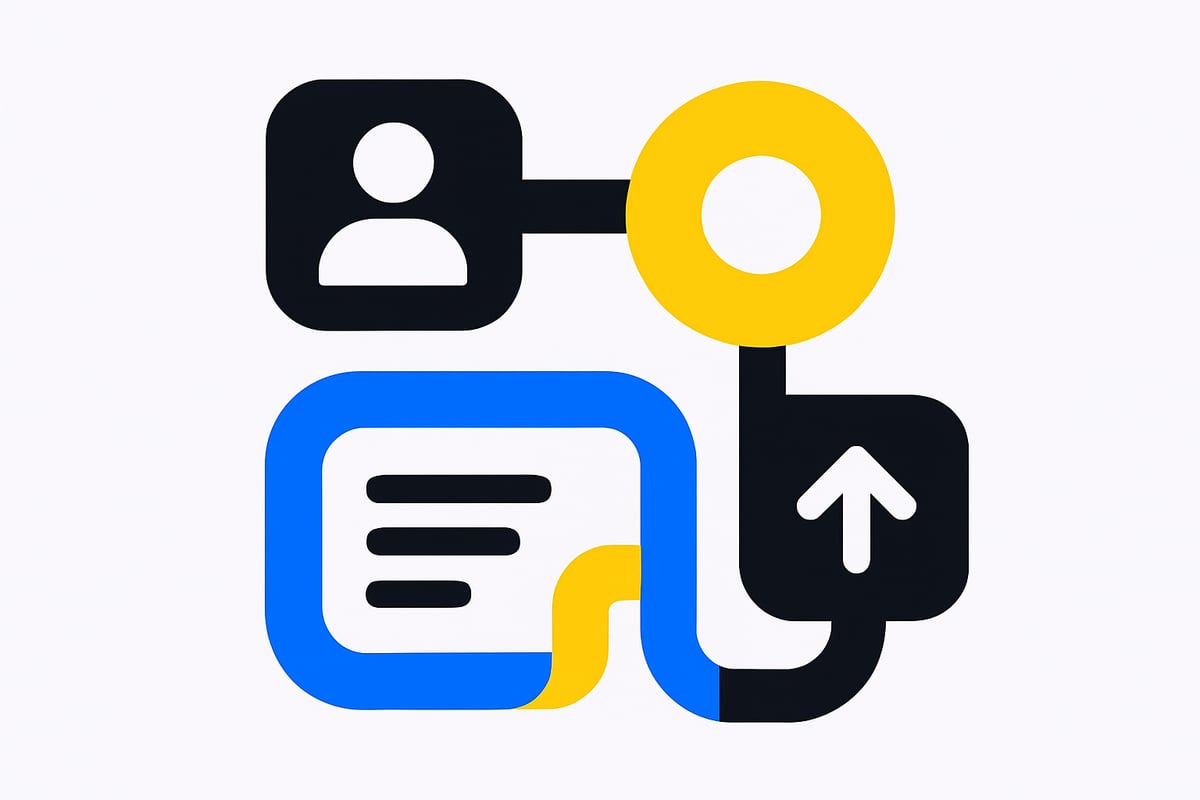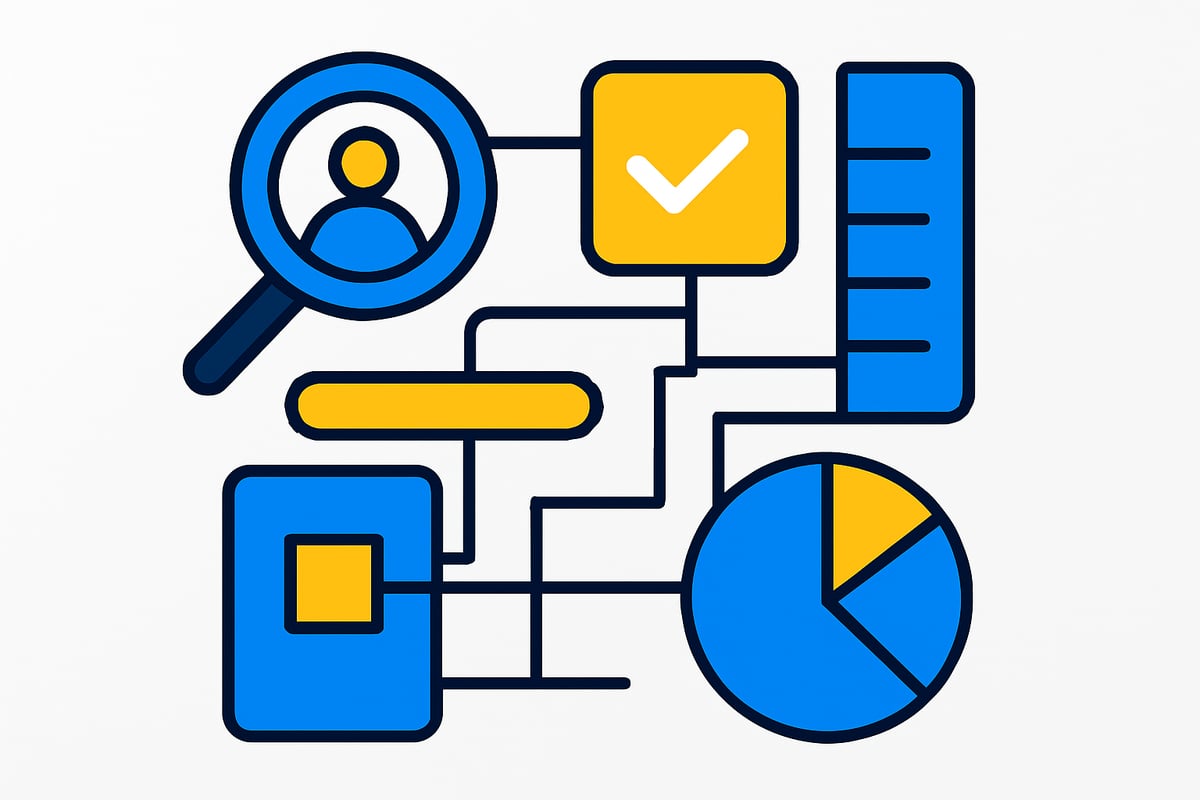October 19, 2025
7 Essential ATS System Features to Streamline Hiring in 2025

Recruitment is evolving faster than ever, with new technology transforming how organizations attract and hire talent. Navigating these changes can be overwhelming for HR leaders and recruiters.
This article will guide you through the seven most vital ats system features to streamline your hiring in 2025. Understanding these tools is essential for staying competitive in a digital-first market.
Discover actionable insights to optimize your recruitment process, boost efficiency, and stay ahead of industry trends. Explore what your team needs to build a smarter, more effective hiring strategy for the year ahead.
Why ATS Systems Are Critical for Modern Hiring
Recruitment today is more complex than ever before. The rise of digital-first strategies and a candidate-driven market have transformed the expectations and demands placed on hiring teams. HR leaders now face a landscape where speed, personalization, and compliance are non-negotiable, while competition for top talent spans global borders.
In this environment, the ats system has become the backbone of efficient hiring operations. By centralizing recruitment workflows, an ats system enables employers to manage every stage of the hiring process from a single, unified platform. This shift not only streamlines collaboration between recruiters and hiring managers but also greatly enhances the candidate experience. In fact, over 90 percent of Fortune 500 companies rely on some form of ats system to power their talent acquisition strategies, underscoring its critical importance in the modern workforce. For a comprehensive overview of how these platforms function and why they matter, see this Applicant Tracking System Overview.
The move to remote and hybrid work has only increased the need for a robust ats system. With teams distributed across geographies and time zones, centralized tools ensure that recruiters can source, engage, and evaluate candidates seamlessly. Automated scheduling, virtual interviews, and digital assessments are now staples, making it easier to tap into a global talent pool while keeping processes efficient and scalable.
Manual hiring methods often result in scattered resumes, lost candidate information, and delayed responses. These inefficiencies can lead to missed opportunities, poor candidate experiences, and ultimately, unfilled roles. An ats system mitigates these issues by automating repetitive tasks, providing real-time status updates, and facilitating transparent communication at every stage.
Compliance is another area where an ats system proves invaluable. With ever-changing regulations around data privacy, equal opportunity, and employment law, organizations need reliable tools to track and document every hiring action. Many ats systems include built-in compliance checks and reporting features, reducing the risk of costly errors and ensuring organizations meet both local and international standards.
Diversity and unbiased hiring are also strongly supported by an ats system. By standardizing processes and anonymizing certain candidate data, these platforms help reduce unconscious bias, promote fair evaluation, and support organizational diversity goals. Integrated analytics further enable leaders to track diversity metrics and identify areas for improvement.
Integration capabilities set an ats system apart in a crowded HR technology landscape. The best solutions connect seamlessly with job boards, HRIS platforms, and communication tools, ensuring that data flows smoothly between systems. This not only eliminates redundant data entry but also provides a holistic view of recruitment performance, enabling smarter decisions and faster time-to-hire.
In summary, the ats system is essential for navigating the complexity of modern recruitment. It empowers organizations to deliver a superior candidate experience, maintain compliance, and build diverse, high-performing teams—all while staying agile in a rapidly evolving market.

7 Essential ATS System Features to Streamline Hiring in 2025
As we look toward 2025, the right ATS system can make or break your recruitment strategy. Technology is evolving at a rapid pace, and selecting a platform with the essential features is key to staying competitive. Below, we break down the seven must-have ATS system features that will empower your hiring team, optimize workflows, and help you build a future-ready talent pipeline.

1. Advanced AI-Powered Candidate Screening
AI-driven candidate screening has transformed what an ats system can deliver. Traditional resume sorting is slow and prone to human bias, but modern ats system platforms use machine learning to parse resumes, match qualifications, and rank applicants automatically. This not only accelerates the initial screening process but increases accuracy.
The core capability here is automated resume parsing. AI algorithms analyze applicant data, extract relevant skills, and compare them directly to job requirements. Leading platforms like Manatal and Greenhouse have integrated these tools, allowing recruiters to focus on high-potential candidates. Machine learning further refines the process, learning from recruiter feedback to improve future recommendations.
One of the most significant benefits of this ats system feature is bias reduction. By standardizing how candidates are assessed, AI can help ensure fairer, more objective shortlisting. Real-world data shows that integrating AI into screening can reduce time spent on initial reviews by up to 50 percent. For a deeper dive into how automated screening is shaping hiring, see Automated Resume Screening Insights.
With manual screening, strong candidates may slip through the cracks. By leveraging AI, an ats system can deliver faster results and higher-quality shortlists, positioning your organization to secure top talent before competitors.
2. Automated Job Posting & Multi-Channel Distribution
Expanding your reach is essential in today’s competitive talent market. An ats system that automates job posting and distributes listings across multiple channels saves your team valuable time and ensures your opportunities are seen by a wider, more diverse audience.
The best ats system platforms allow you to draft a single job post and push it to major boards like Indeed and LinkedIn, as well as niche industry sites, with just a click. This automation eliminates repetitive manual entries and reduces the chance of errors. Integrations with social platforms further boost visibility and engagement.
Solutions like Zoho Recruit and Workable exemplify this feature in action. By automating distribution, these platforms have reported significant increases in applicant volume and diversity. Recruiters can also track where the best candidates are coming from, refining their sourcing strategies over time.
Ultimately, an ats system with automated posting capabilities streamlines the hiring pipeline, freeing up recruiters to focus on candidate engagement and assessment rather than administrative tasks.
3. Seamless Interview Scheduling & Communication Tools
Interview scheduling can be a logistical headache, but a modern ats system solves this by integrating calendar sync and communication tools directly into the hiring workflow. Candidates can book interview slots at their convenience, reducing the back-and-forth that often delays the process.
Built-in features like automated reminders, email templates, and even video interview integrations ensure that both recruiters and candidates stay informed. Platforms such as BambooHR and Recruitee make it easy for teams to coordinate, minimizing scheduling conflicts and creating a smoother candidate journey.
By centralizing communication within the ats system, all interactions are logged and accessible. This leads to fewer missed messages and helps maintain a consistent, professional experience for candidates.
The result is a measurable reduction in time-to-interview and a notable improvement in candidate satisfaction. When your ats system handles these logistics, your team can focus on evaluating talent, not managing calendars.
4. Customizable Workflow Automation
Every organization’s hiring process is unique, and a flexible ats system must adapt accordingly. Customizable workflow automation enables teams to build pipelines that reflect their specific stages, approval chains, and compliance requirements.
This feature lets you set up triggers for automated emails, status changes, and task assignments. For example, when a candidate moves from screening to interview, the ats system can automatically notify stakeholders and update relevant records. This reduces manual effort and ensures no step is missed.
Platforms like Pinpoint and JazzHR have set the standard for customizable hiring flows. Whether you are recruiting for technical roles, volume hiring, or executive searches, automation ensures each process is tailored to your needs.
Workflow customization within an ats system leads to increased recruiter productivity and a more consistent candidate experience. By minimizing repetitive tasks, your team can spend more time on strategic decision-making and relationship-building.
5. Comprehensive Analytics & Reporting Dashboards
Data-driven decision-making is essential in modern recruitment. An ats system equipped with robust analytics and visual dashboards helps you track key hiring metrics in real time. These include time-to-fill, source of hire, diversity ratios, and offer acceptance rates.
With clear, customizable dashboards, hiring teams can quickly identify bottlenecks and optimize processes. For example, if time-to-fill is creeping up, analytics reveal which stages are causing delays. Platforms such as SAP SuccessFactors and PCRecruiter excel in providing detailed reporting, allowing organizations to benchmark performance and set measurable goals.
Real-time insights empower HR leaders to continuously improve their ats system strategy. By understanding where top candidates come from and which channels are most effective, teams can allocate resources more efficiently.
Ultimately, comprehensive analytics transform an ats system from a simple tracking tool into a powerful engine for recruitment optimization.
6. Enhanced Candidate Experience & Employer Branding Tools
In today’s market, candidate experience is a differentiator. An ats system that offers customizable career sites, branded communications, and mobile-friendly applications helps organizations stand out. The application process becomes smooth, engaging, and reflective of your employer brand.
Features like personalized messaging, status updates, and easy-to-navigate portals contribute to higher completion rates. Teamtailor and Workable have demonstrated that branded, intuitive interfaces can boost application completion rates and generate positive candidate feedback.
A strong candidate experience not only increases the likelihood of offer acceptance but also enhances your reputation in the talent marketplace. Industry statistics show that candidate experience can influence offer acceptance rates by more than 70 percent.
Your ats system should make every touchpoint—from initial application to final offer—a positive interaction, reinforcing your brand and values with each step.
7. Deep Integrations with HR Tech Ecosystem
No ats system operates in isolation. Deep integration with HRIS, onboarding, background checks, and assessment tools is vital for modern recruitment teams. Unified data flows reduce manual entry, eliminate errors, and support compliance.
Platforms like Bullhorn and Rippling lead the way with extensive integration marketplaces, connecting your ats system to payroll, benefits, and more. This ensures that once a candidate accepts an offer, their information seamlessly flows into onboarding and other HR processes.
Integrated systems save time and reduce administrative workload. With a connected ats system, recruiters can focus on strategic tasks rather than duplicating data entry or chasing paperwork.
The ability to integrate deeply with your tech stack future-proofs your recruitment operations, making it easier to scale and adapt as your organization grows.
How to Evaluate and Prioritize ATS Features for Your Organization
Evaluating the right ats system features for your organization is crucial to achieving efficient, scalable hiring. Begin by understanding your unique recruitment challenges and aligning them with your business objectives. The right ats system will not only streamline your processes but also support your long-term talent goals in a competitive market.
Start by assessing your current and projected hiring volume. Consider the size of your team, expected growth, and the complexity of your recruitment cycles. If your organization is rapidly expanding or entering new markets, you may need an ats system that offers robust automation, advanced analytics, and deep integration capabilities. Also, review your existing HR tech stack to ensure any new ats system can easily integrate with current tools and platforms, minimizing disruption.
Prioritize features based on your industry requirements and company structure. For example, a tech startup may focus on customizable workflow automation, while a larger enterprise may need advanced compliance and reporting tools. Evaluate user adoption by involving recruiters early in the selection process. The ats system should offer an intuitive interface and training resources to drive engagement. Scalability is another factor; choose a platform that can adapt as your organization grows, supporting multiple locations or departments without losing efficiency.
Consider the total cost of ownership, including subscription fees, implementation, maintenance, and potential future upgrades. Vendor support is essential, so look for providers with responsive customer service and clear service-level agreements. To minimize risk, run pilot programs with shortlisted ats system platforms and gather feedback from recruiters and hiring managers. Their insights can highlight usability issues or missing capabilities before a full rollout. For a structured approach to comparing features and platforms, consult resources like the ATS Software Comparison Guide, which helps you benchmark solutions against your priorities and make informed decisions.

Future Trends: What to Expect from ATS Systems Beyond 2025
Recruitment technology is moving faster than ever, and the future of the ats system promises even more dramatic changes. As organizations compete for top talent, the next generation of these platforms will be defined by deeper intelligence, automation, and personalization. Staying ahead means understanding how these advancements will shape the hiring landscape and preparing to adopt the right innovations.

One of the most significant trends is the rise of conversational AI and predictive hiring analytics. Future ats system platforms will leverage advanced natural language processing to guide candidates through applications, answer questions instantly, and provide real-time feedback. Predictive analytics will help recruiters anticipate hiring needs, identify best-fit candidates, and reduce time-to-hire. As noted in AI's Impact on Recruitment Efficiency, these tools are already delivering measurable improvements in application conversion rates and decision speed.
Another key development is the expansion of diversity, equity, and inclusion (DEI) tools. Modern ats system solutions are expected to integrate automated reference checks, global compliance features, and bias reduction algorithms. These capabilities will help organizations ensure fair hiring practices across borders and foster more inclusive workplaces. Enhanced analytics will also make it easier to track diversity metrics and adjust hiring strategies for better results.
Deeper candidate relationship management is also on the horizon. Future ats system platforms will support ongoing engagement with talent pools through hyper-personalized communication, nurturing passive candidates, and maintaining a strong employer brand presence. As explored in AI's Influence on Candidate Experience, this approach leads to higher engagement and a better candidate journey throughout the process.
Looking ahead, organizations can expect ats system technology to enable proactive talent pipelining and skills-based matching. AI-driven platforms will identify emerging skill gaps, suggest upskilling paths, and connect companies with candidates who fit evolving business needs. To stay competitive, HR leaders should regularly evaluate new features, run pilot programs, and foster a culture of continuous improvement in their hiring practices.
